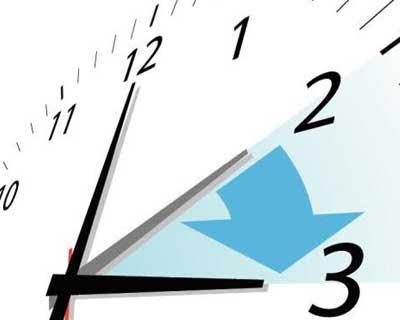- Home
- Editorial
- News
- Practice Guidelines
- Anesthesiology Guidelines
- Cancer Guidelines
- Cardiac Sciences Guidelines
- Critical Care Guidelines
- Dentistry Guidelines
- Dermatology Guidelines
- Diabetes and Endo Guidelines
- Diagnostics Guidelines
- ENT Guidelines
- Featured Practice Guidelines
- Gastroenterology Guidelines
- Geriatrics Guidelines
- Medicine Guidelines
- Nephrology Guidelines
- Neurosciences Guidelines
- Obs and Gynae Guidelines
- Ophthalmology Guidelines
- Orthopaedics Guidelines
- Paediatrics Guidelines
- Psychiatry Guidelines
- Pulmonology Guidelines
- Radiology Guidelines
- Surgery Guidelines
- Urology Guidelines
Myocardial infarction : Rush-hour for neutrophils

LMU researchers have shown that circadian oscillations in the influx of immune cells into the damaged tissue play a crucial role in exacerbating the effects of an acute heart attack in the early morning hours.
The extent of the inflammatory reaction triggered by an acute heart attack, and of the resulting damage to the heart muscle, varies depending on the time of day at which the infarct occurs. In a new study, researchers led by Sabine Steffens, Professor of Clinical Pathobiochemistry in the Institute for Cardiovascular Prevention (IPEK) at the LMU Medical Center confirm that the intensity of the immune reaction is correlated with the level of recruitment of immune cells called neutrophilic granulocytes to the damaged heart. More importantly, they show that the number of neutrophils present in the circulation naturally fluctuates with the time of day, and that circadian variations in the expression of chemokine receptor CXCR2 play a crucial role in regulating the migration of granulocytes into the damaged tissue. The new findings appear in the journal EMBO Molecular Medicine.
Myocardial infarctions are precipitated by an acute decrease in the supply of oxygen to the heart, which results in the death of the muscle cells affected. In response to this cell loss, neutrophilic granulocytes are recruited to the site of tissue damage by molecular messages called chemokines. The neutrophils then trigger an inflammatory reaction by attracting other types of immune cells that facilitate the degradation and disposal of the dead cells. In an earlier report published in the European Heart Journal, Steffens and her colleagues had shown that these neutrophils play a critical role in the healing of the heart following an acute infarct provided that their recruitment is restricted and the inflammatory reaction does not get out of hand.
Many studies have shown that the risk of suffering a heart attack reaches a peak in the early morning, soon after the end of the sleep phase. The consequences of an infarct are also influenced by the time of day: Attacks that occur in the forenoon are more likely to be fatal, and are associated with a poorer long-term outcome. However, the molecular mechanisms responsible for these striking effects have remained largely unclear. Steffens and her team have now shown that recruitment of neutrophils to the damaged heart muscle is itself controlled by the body’s circadian clock. About an hour after resumption of activity soon after waking up, more cells migrate into the heart muscle and induce a stronger inflammatory response than if the acute attack occurs during sleep or later in the day.
“We show that at the onset of the active phase, more neutrophils leave the bone marrow than at other times. In humans, this phase occurs early in the morning. A myocardial infarction at this time of day thus leads to an exaggerated inflammation reaction induced by the availability of more neutrophils in the bloodstream,” Steffens explains. This has a deleterious effect on the clinical prognosis, because it stimulates scar formation. Scarring induces enlargement of the heart muscle and reduces its ability to contract, which eventually leads to heart failure.
In addition, the LMU team showed that the level of the receptor CXCR2 found on the surface of neutrophils also varies with the time of day, being expressed at high levels immediately after waking. When the team prevented activation of the receptor by blocking the binding of its chemokine ligand, the degree of cardiac inflammation and the amount of damage to the heart muscle was reduced. “Our study shows that time of day plays an important role in determining the optimal treatment for an acute heart attack, and that CXCR2 constitutes an interesting target for drugs designed to control the recruitment of neutrophils to the site of damage in the aftermath of a heart attack,” says Steffens.
You can read the full article by clicking on the following link :
M. J. Schloss, M. Horckmans, K. Nitz, J. Duchene, M. Drechsler, K. Bidzhekov, C. Scheiermann, C. Weber, O. Soehnlein, S. Steffens. The time-of-day of myocardial infarction onset affects healing through oscillations in cardiac neutrophil recruitment. EMBO Molecular Medicine, 2016; DOI: 10.15252/emmm.201506083

Disclaimer: This site is primarily intended for healthcare professionals. Any content/information on this website does not replace the advice of medical and/or health professionals and should not be construed as medical/diagnostic advice/endorsement or prescription. Use of this site is subject to our terms of use, privacy policy, advertisement policy. © 2020 Minerva Medical Treatment Pvt Ltd